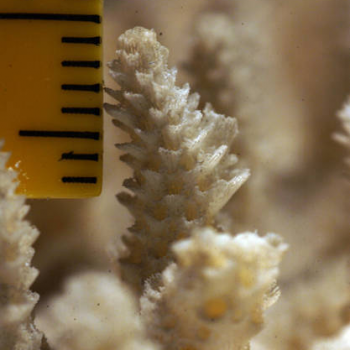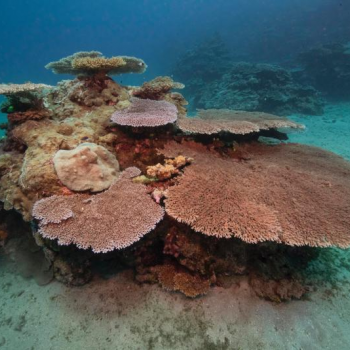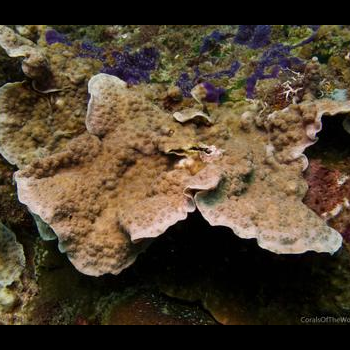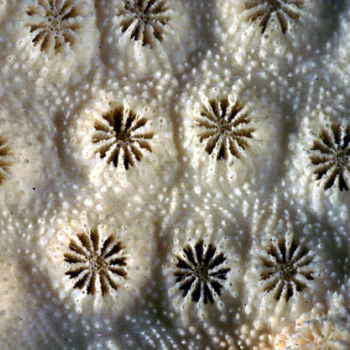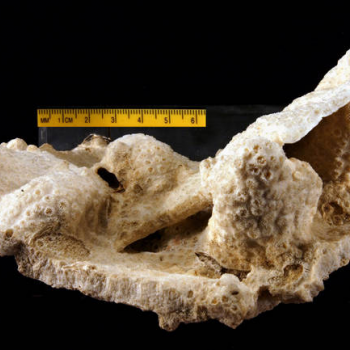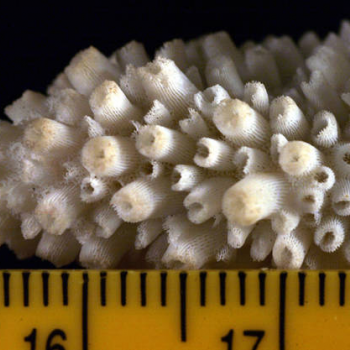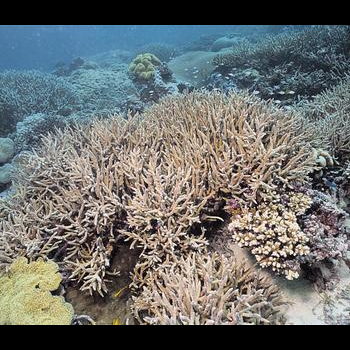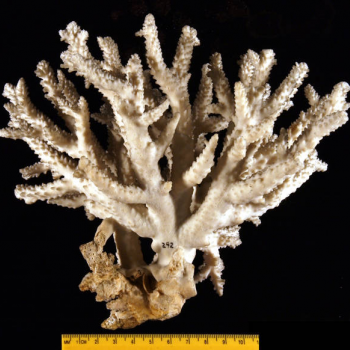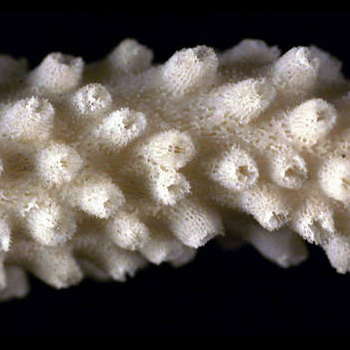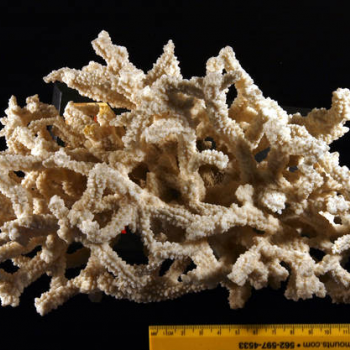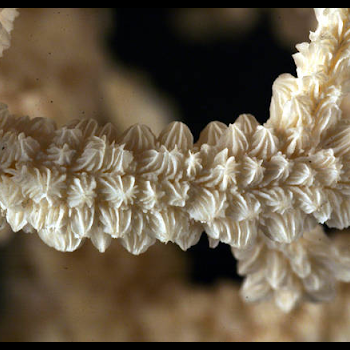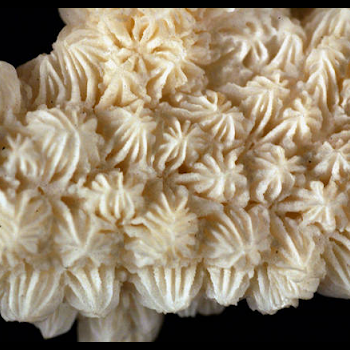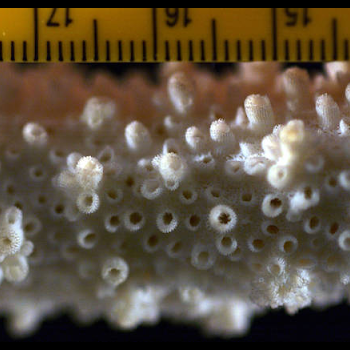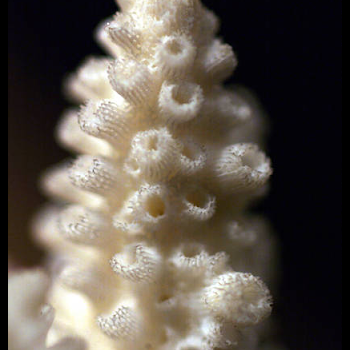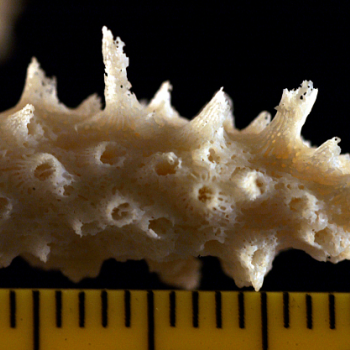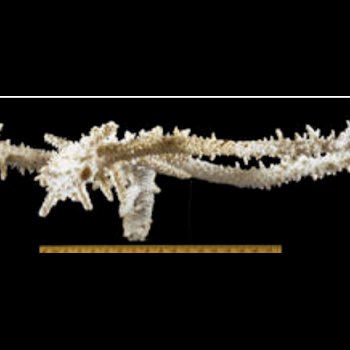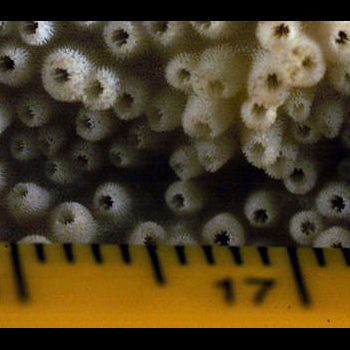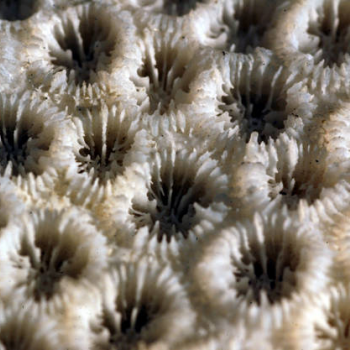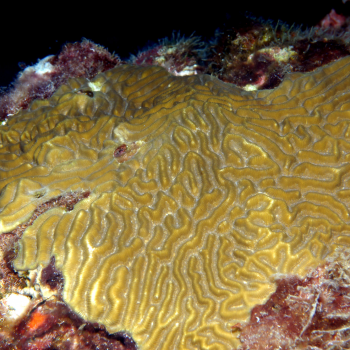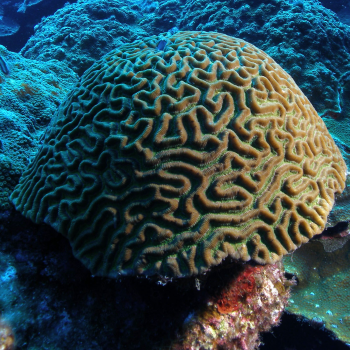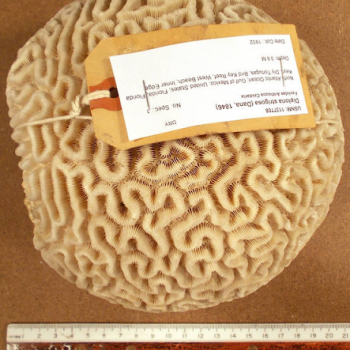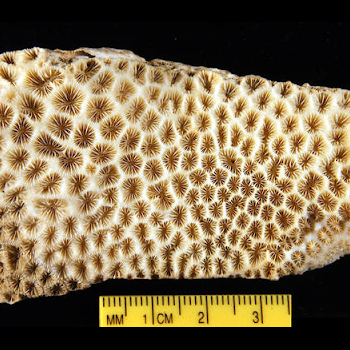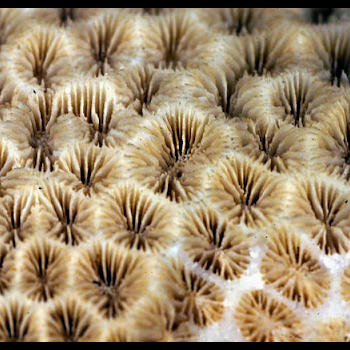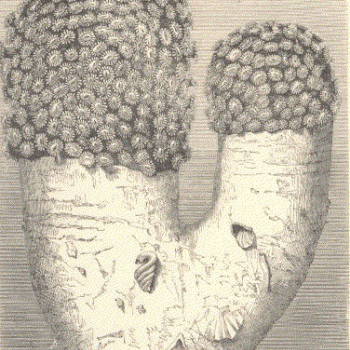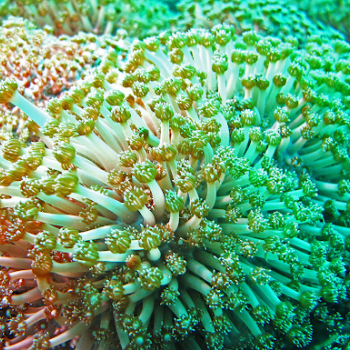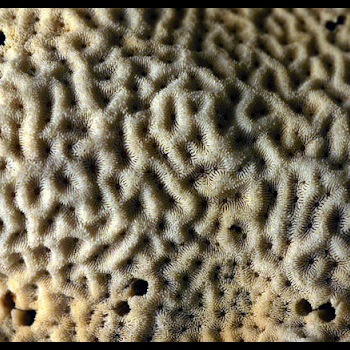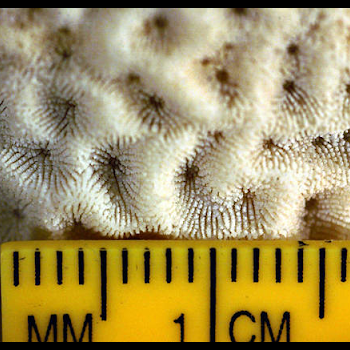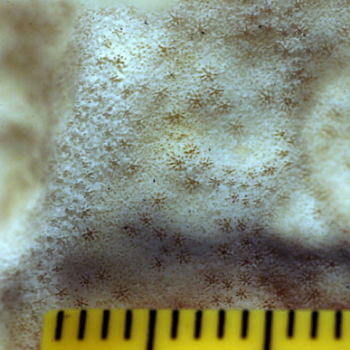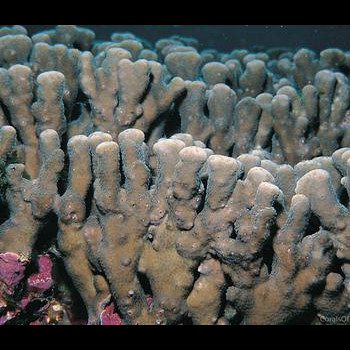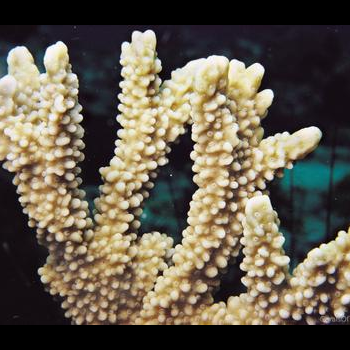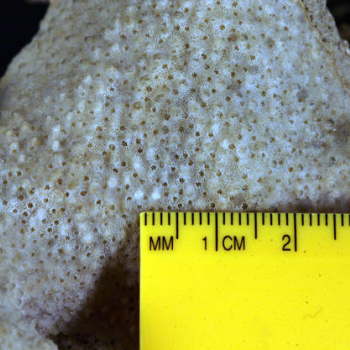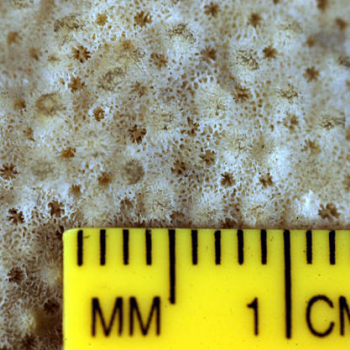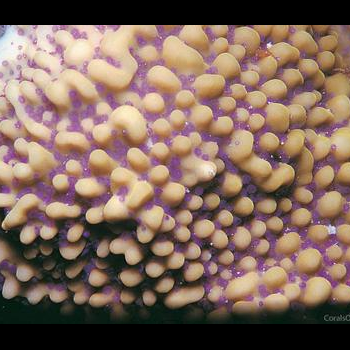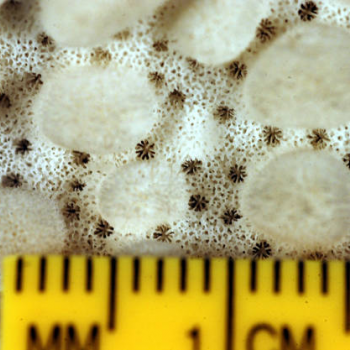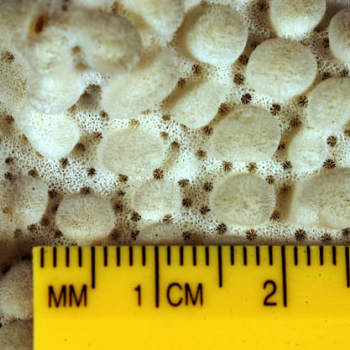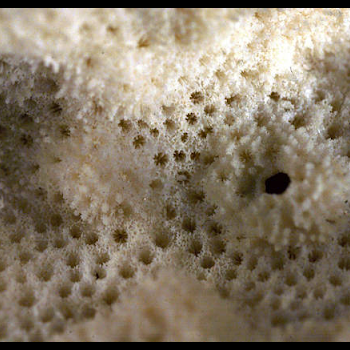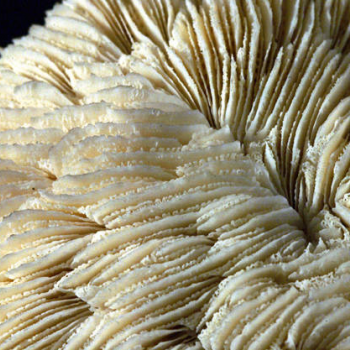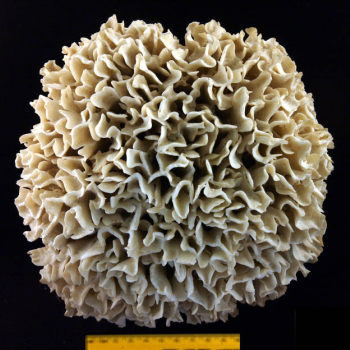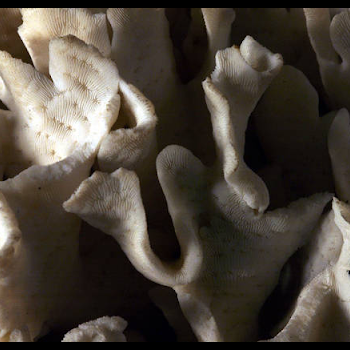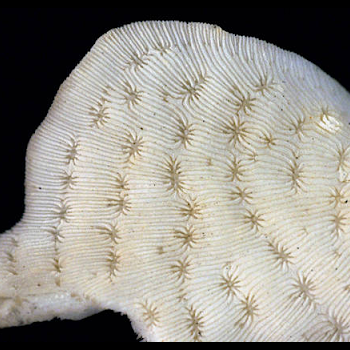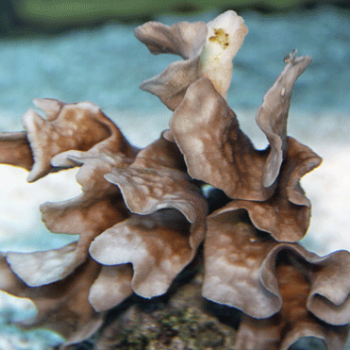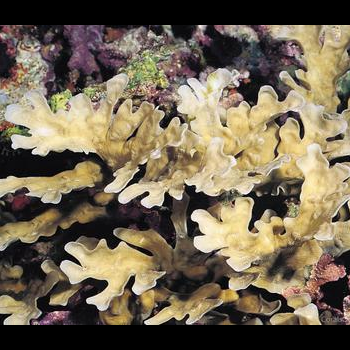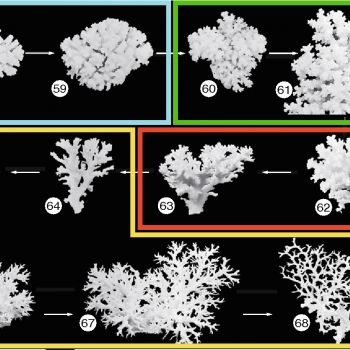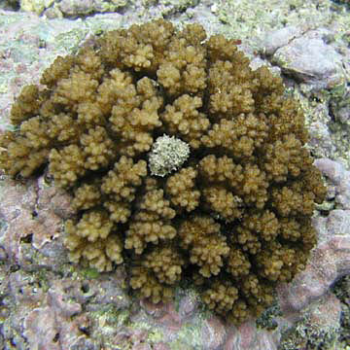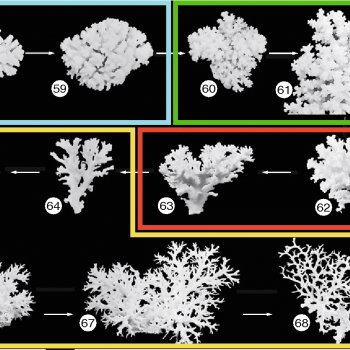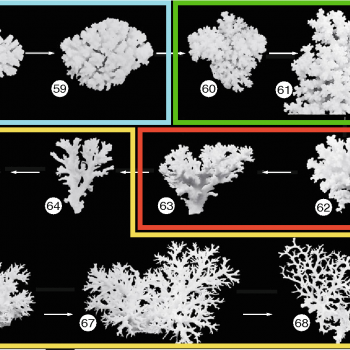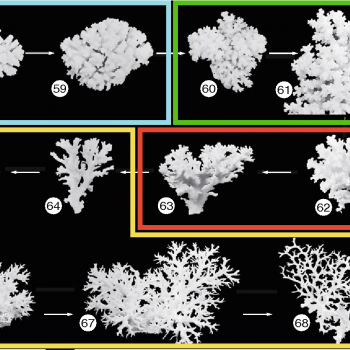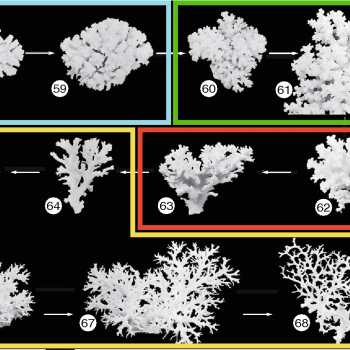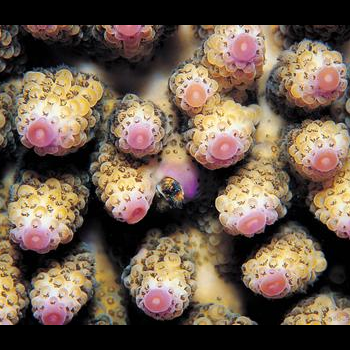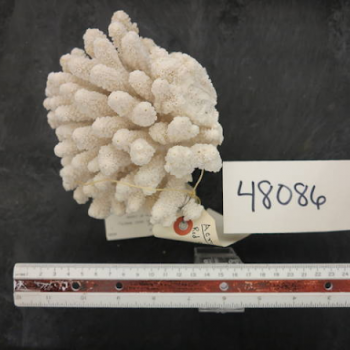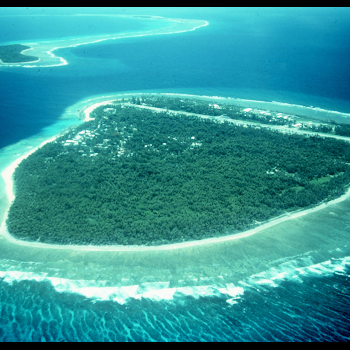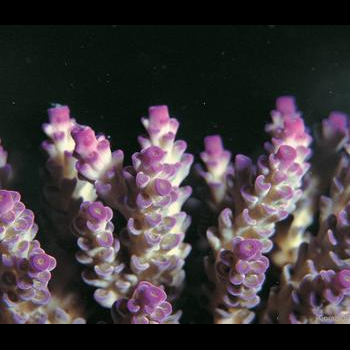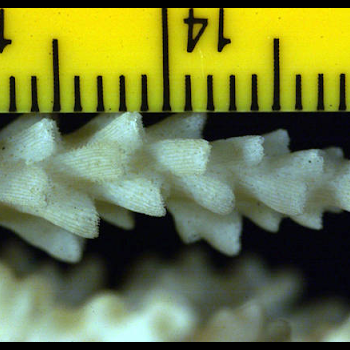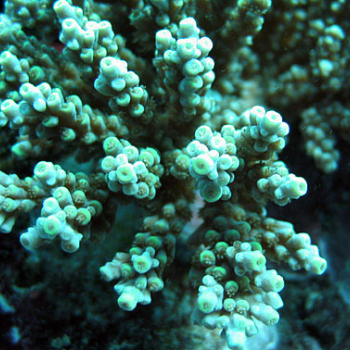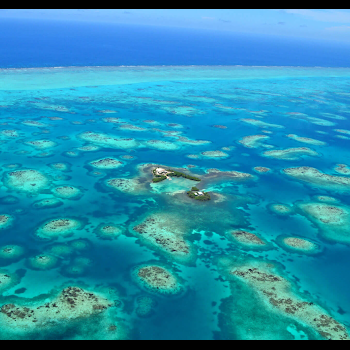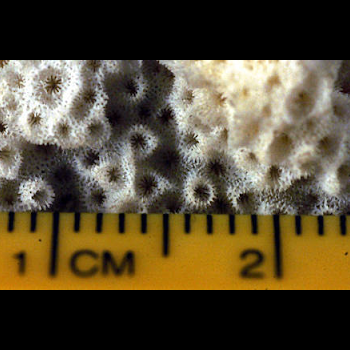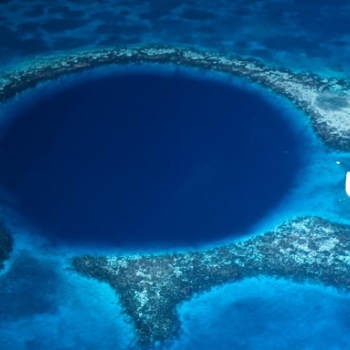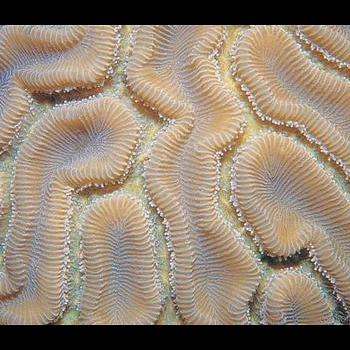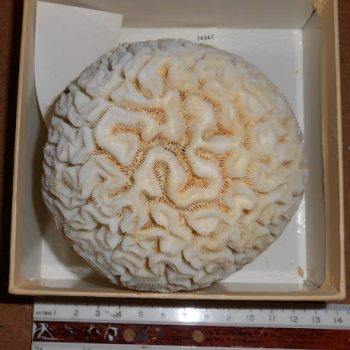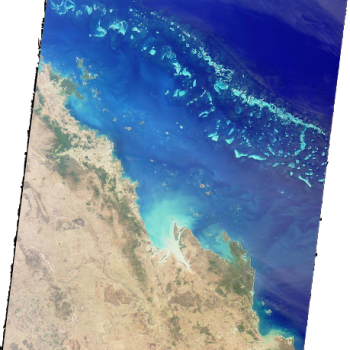Table & Plate Corals
Table corals grow outward in horizontal sheets. This growth form is common in the genus Acropora.
Madrepora spicifera
Compared to other growth forms, table and plate corals tend to be more vulnerable to bleaching events and storm damage.
Madrepora surculosa
Coral species that develop in a table growth form typically grow in horizontal plates, so this specimen is likely displayed 90 degrees from its natural position
Echinopora reflexa
Branching Corals
Branching corals have tree-like shapes, with fast-growing branches reaching upwards towards the sea surface.
Madrepora robusta
Madrepora formosa
Acropora valenciennesi
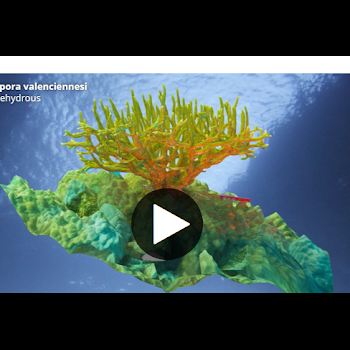
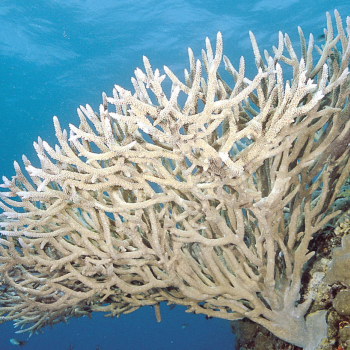
This is a macro (close-up) shot of this specimen. You can view the whole colony in Ecosystem Engineers.
Merulina rigida
The origin of many species names are derived from Greek and Latin roots, often with direct, descriptive meaning. The species name florida does not pertain to the location, but instead stems from the Latin flōreō + -idus, meaning ‘blooming’, ‘flowery’, or ‘florid’.
Madrepora florida
Madrepora horrida
Madrepora cuneata
Massive Corals
This colony grows in a massive growth form. When used to describe coral, the term ‘massive’ describes its dense and solid shape, and does not necessarily mean it is large in size. Massive species are slow-growing and generally tolerant of temperature fluctuations and rough wave action.
Astraea (Orbicella) coronata
Though this particular colony has a massive growth form, this species also occurs as flat, encrusting structures.
Pseudodiploria strigosa
Astraea (Fissicella) pulchra
Pillar / Columnar Corals
Pillar corals grow in vertical cylinders and do not form secondary branches.
Goniopora columna
Psammocora columna
Taxonomists often use distinct corallite structures to identify a species. The corallites of Porites colonies are very small and appear crowded.
Porites monticulosa
Encrusting Corals
Manopora capitata
Montipora danae
Manopora nodosa
Free-Living Corals
This coral is in the family of Fungiidae, commonly referred to as mushroom corals, which are all solitary in their growth forms. Solitary corals can develop their own stable habitat in regions where it may be unsuitable for typical coral growth.
A common name for this solitary species is ‘slipper coral’.
Herpetolithus crassus
Foliose Corals
Pavonia praetorta
Leptoseris gardineri
Ecomorphs
Although a coral species may have a typical growth form, colony shape can vary. Coral development and morphology is strongly influenced by their environmental conditions, and the term ‘ecomorph’ describes distinctive ecological and morphological traits unique to a certain region or habitat.
Pocillopora damicornis
Pocillopora damicornis
Pocillopora damicornis
Coral species can reproduce sexually or asexually. When a sexually produced, motile larvae settle on a rock (or substrate) it metamorphoses into a coral polyp. This single polyp reproduces asexually to grow other polyps, forming a colony.
Pocillopora damicornis
Pocillopora damicornis
Reef Structures
Coral polyps secrete calcium carbonate that build their skeletal structure and grow colonies. When groups of coral colonies are well established, they form a reef, which can be classified as fringing, patch, atoll, or barrier.
Fringing Reefs
The most common reef formations found around the world are ‘fringing’ reefs, which form close to shore are generally still attached to the coast. These coral reef habitats are shallow and exposed during low tide. The largest fringing reef in the world is found along Ningaloo Coast, on the western side of Australia.
Acropora digitifera
Patch Reefs
Reefs that occur in small, isolated spots are known as patch reefs. They are typically found in shallow waters on a continental shelf, between fringing and barrier reefs.
Madrepora tenuis
Atoll Reefs
Atolls reefs form as volcanoes recede and subside below the water level, leaving ring-like fringing reefs behind. The most famous atoll reef, Lighthouse Reef, surrounds the Great Blue Hole in Belize. In 1996, this reef along with six other protected areas was designated as part of a UNESCO World Heritage Site known as the Belize Barrier Reef Reserve System (BBRRS).
Manopora caliculata
Barrier Reefs
Barrier reefs grow parallel to shorelines, separated from land by a lagoon. Barrier reefs are important geological structures that protect human communities and shorelines from erosion and infrastructural damage. The Great Barrier Reef in Australia spans a distance of 1429 miles (2300 km) along the eastern edge of the continental shelf.

